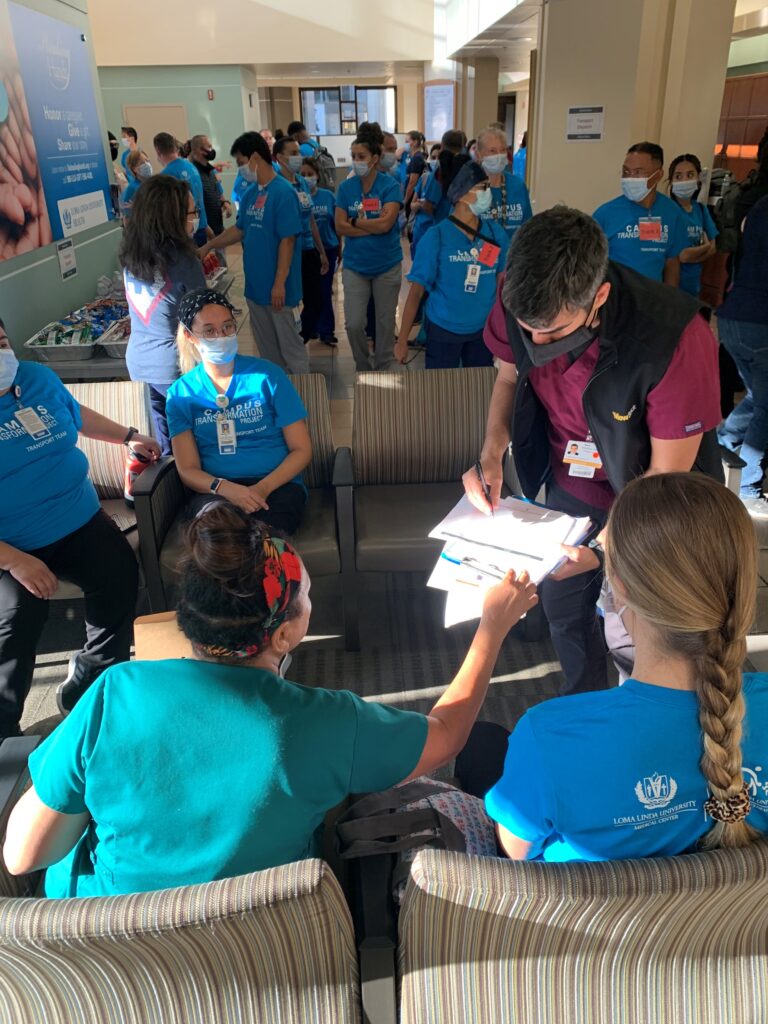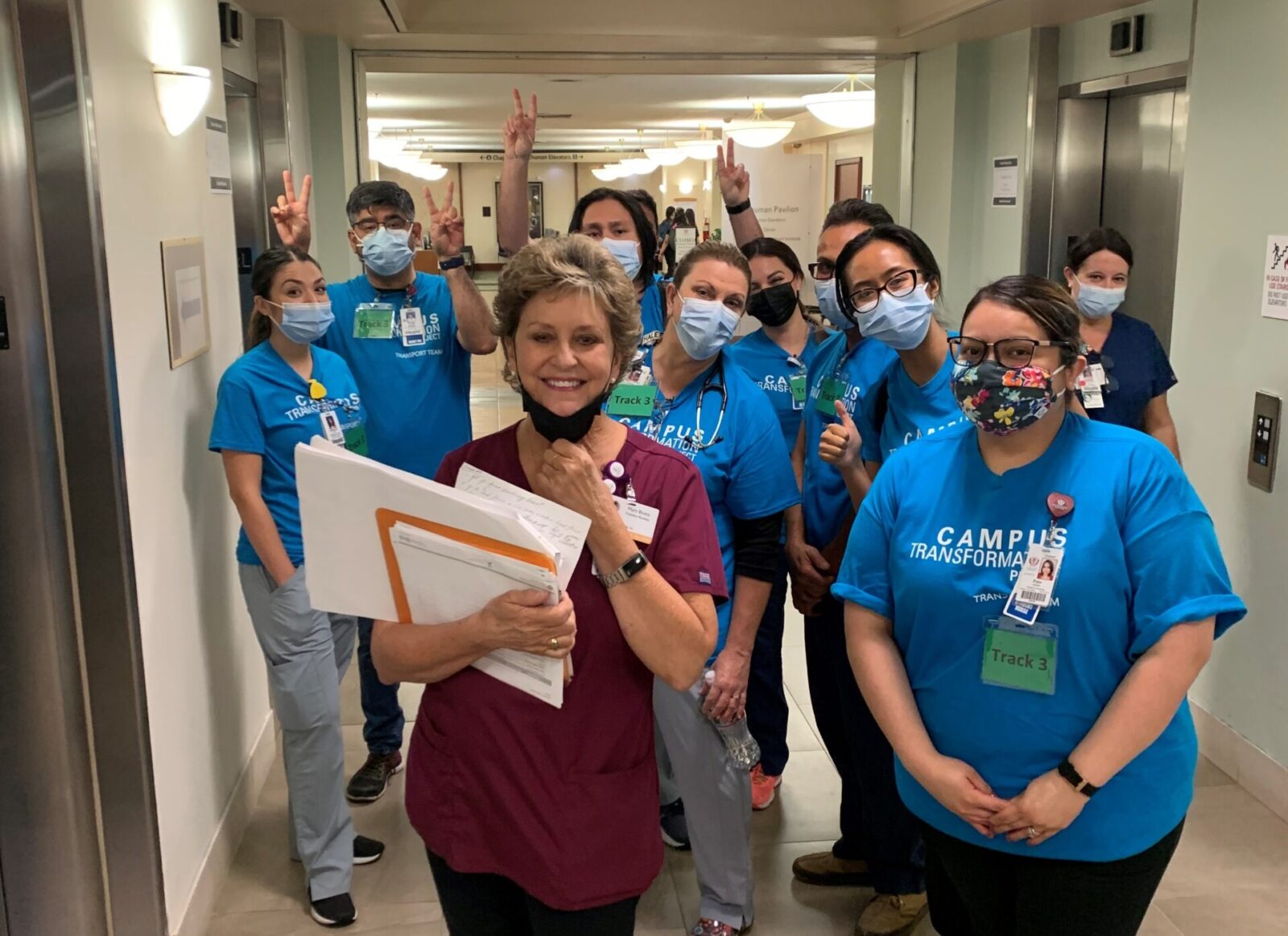By: Kathy Stevenson
When activating a new hospital, developing a safe and efficient plan to relocate your patients on opening day is critical. The Yellow Brick team has helped more than 30 healthcare organizations across North America relocate into their new facilities. From large academic medical centers to small community hospitals, we have experience moving all types of patients, including the most critical ICU patients, the tiniest NICU babies, and all other specialties, including rehabilitation patients and mental health patients. Patient Move Day is the culmination of meticulous planning and, despite all the stress and anxiety, is always a memorable day for the organization.
Although it would be infeasible to articulate the immense efforts of orchestrating the transfer of patients from one facility to another in a single article, there are key constraints to consider when assessing how best to conduct a patient move, which are shared below.
Don’t Neglect Other Transition and Activation Planning Activities
In almost every instance, our client partners want to begin planning for the move immediately. Before moving patients into the new facility, you must develop plans on how patients will be cared for in the new environment, how staff will traverse through the new space, and what new and different equipment and systems will change how the teams are doing their jobs today.
Each move plan is unique, and there is not a one-size-fits-all model. The move planner needs to assess the event’s complexities, including the number of patients expected to move, the type of move (e.g., through contiguous corridors or via ambulances), the patient populations, and any unique factors or constraints. This information allows the patient move planner to understand how much time is required to plan for the move. In most cases, we begin move planning approximately nine months before the target move date, but we have started our planning one year before the move for those projects that are very complex. During the initial months of planning, the move planner will tailor the organization’s move plan, iteratively gathering information from the required teams.
Single-Day Move Approach
Our clients are often surprised to learn that we will move all patients in a single day. Considering we are typically moving anywhere from 100 to 400 patients, we understand their hesitation, as that can seem like a daunting task. Through our experience, we have found that moving in a single day limits the resources required to support both locations over an extended period. When considering resources, it is essential to account for the additional patient care staff to send and receive patients as well as the support services required to keep both facilities fully functional to support patient care. Patient Move Day is very different from the daily transferring of patients in or between hospitals. Using an all-hands approach for a single day allows us to focus on the safe and efficient transfer of patients.

Patient Population Impacts
We must consider the patient populations moving into the new space when developing our Patient Move Plan. Patient safety is our top priority. As we establish the sequence in which patients will be moved, we must consider the complexity and acuity of patients. When transferring patients, we must ensure that there are appropriate resources in both the sending and receiving units to care for the patients. Another consideration is to evaluate if resources are required along the patient move route to maintain patient privacy and safety during transfer.

Type of Move
Understanding the type of move is another key consideration when developing the Patient Move Plan. Below are some questions to ensure the plan is comprehensive:
- Which paths of travel can be utilized?
- Are the facilities adjacent?
- How many bridges or connections will be available?
- Will patients be moved by ambulance?
- How many ambulances will be available?
- How many transport teams are available?
- From which locations can patients exit and enter the unit?
- How many elevators are available?
- What equipment will be moved with the patient?
Know the Plan and Don’t Go Rogue
A well-communicated plan is essential to success. We often remind staff and leadership that everyone must stick to the plan and should not go rogue. Setting clear expectations of move participant’s roles and responsibilities ensures everyone knows how they will be involved and what they should and should not do. In addition to patient management, the move plan should include department-specific activities, a meal plan for patients and staff, and visitor management.
Move Communication
An essential element of any well-executed project is communication. Work with your organization’s marketing and communications team to develop a move communication plan for all stakeholders. In the weeks leading up to the move, staff communications should highlight essential details for Patient Move Day, including what to expect, any impacts to parking, and changes to paths of travel for the day. Patient communication is also very important. Having a family member in the hospital is already stressful, so clear communication regarding the plan, timing, and expectations is essential to minimize the impact.
Patient move planning is a detailed and labor-intensive process that is unique for each organization. For most, the patient move is a once-in-a-lifetime experience, but we get to do it for a living. Contracting a resource experienced with the intricacies of move planning is recommended when planning a patient move. Tools, templates, best practices, and lessons learned are just a handful of reasons why investing in a qualified consultant is worthwhile.
If you are designing a new healthcare facility or planning to activate a new hospital and are unsure how you will move patients, reach out to our team. We are always willing to answer questions and assess your organization’s needs to ensure you have a successful Patient Move Day.

